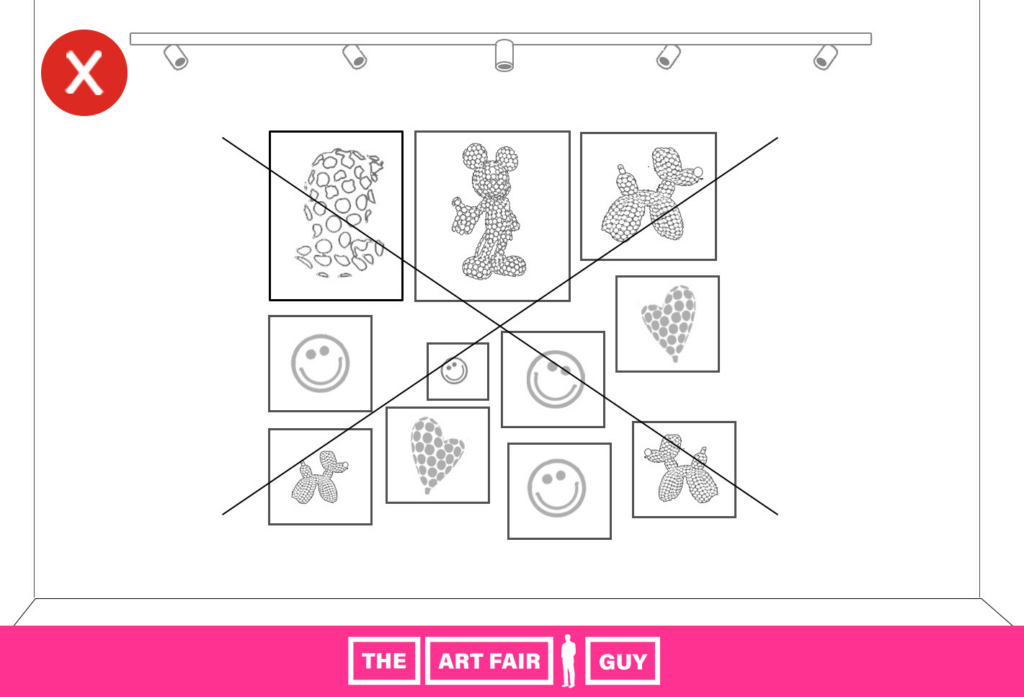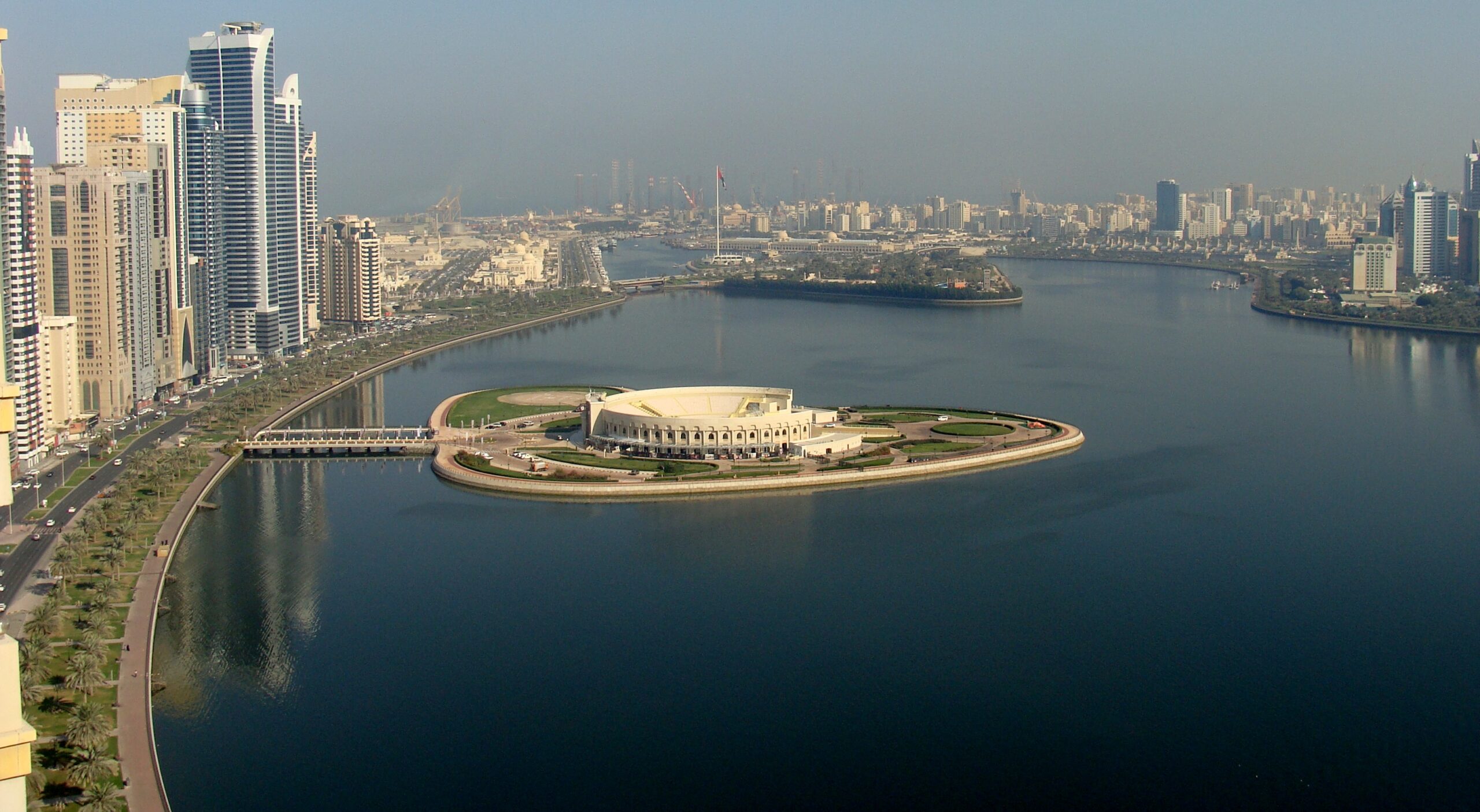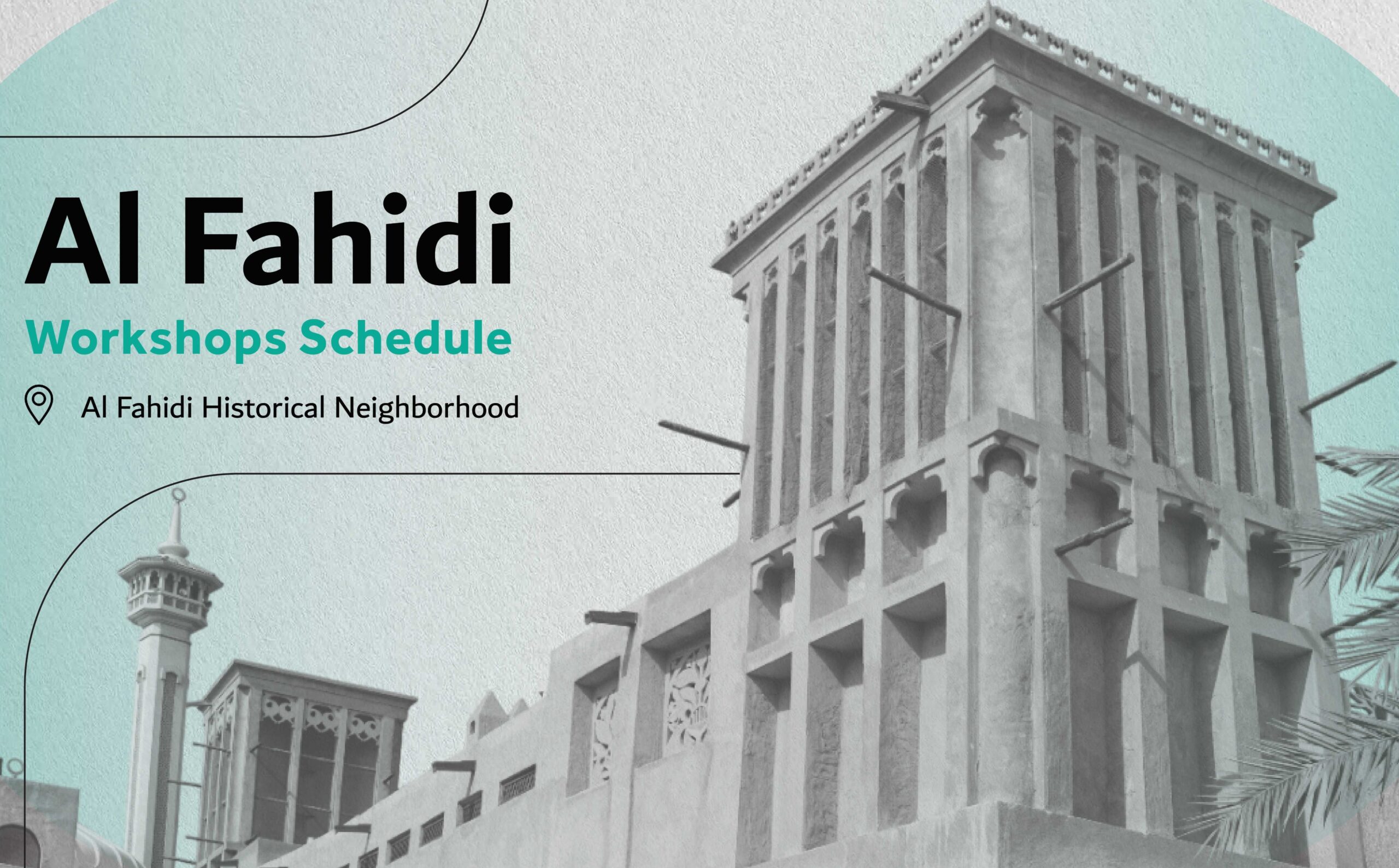How to hang artworks at art fairs and art exhibitions
When hanging artworks at an art fair, it’s important to create an appealing and organized display that showcases your art in the best possible way. Here are some steps to help you properly hang artworks at your next art fair or art exhibition:
1.) Check the curation guidelines of the art fair or exhibition you are participating at
Remember to comply with any rules or guidelines provided by the art fair or exhibition organizers regarding hanging procedures, height restrictions, or prohibited materials. Often curators or organizers will send out these guidelines in the days and weeks prior to the exhibition. In case you do not receive any rules or guidelines – it’s always good to proactively ask if there are any to avoid any surprises when setting up your exhibition booth.
2.) Plan your Art Fair Booth/Stand before your Arrival for Set-Up
Before the art fair, create a layout or sketch of how you want to arrange your artworks. Consider factors such as the size, shape, and theme of each piece, and how they will interact with each other when displayed together. It is also important to know the exact dimensions of the space available to you during the exhibition. Make sure you contact the organizer to check the height and width of the wall space provided to you. Most professional art galleries will create a scale model of their exhibition booth before the exhibition and meticulously plan which artwork goes where. This may seem like a bit of an overkill at first, however, it will save you a lot of valuable time (and nerves) when you arrive at the exhibition. It will also give you time to think about how to hang your artworks in a visually appealing way without any pressure being put on you. Art Fair & Exhibition set-ups can be quite stressful and nerve wrecking – especially if there are only a few hours of set-up time available.
Additionally, we recommend checking which tools and materials you need for setting up your exhibition space! Make sure you don’t forget anything when you are packing. This way you don’t have to run around and borrow stuff from other artists or galleries.
3.) Optimal height to hang artworks at an art fair or art exhibition
The optimal height to hang artworks can vary depending on several factors, including the type of artwork, the space it will be displayed in, and the viewer’s average eye level. However, a general guideline is to hang the center of the artwork at eye level.
Eye level is typically considered to be around 57 to 60 inches (145 to 153 cm) from the floor. This height is based on the average eye level of most adults. By hanging artworks at this level, you ensure that they are easily visible and accessible to viewers without requiring them to strain their necks or look too far up or down.
Keep in mind that this guideline can be adjusted based on the specific circumstances. For example, if you expect children to be among the primary viewers, you might consider hanging artworks a bit lower, closer to their eye level. Similarly, if your target audience consists of individuals who are taller or shorter than average, you can make minor adjustments to accommodate their eye levels.
When creating a display at an art fair, it’s also important to consider the overall arrangement and grouping of artworks. Maintain consistent eye-level placement for individual pieces while ensuring that the entire display maintains a cohesive and visually pleasing composition.
Ultimately, it’s a good idea to step back and assess the arrangement from different angles and heights to ensure that the hanging height is appropriate and visually appealing for the majority of viewers.

4.) Optimal spacing between artworks at an art fair
The optimal spacing between artworks at an art fair can vary depending on several factors, including the size and scale of the artworks, the layout of the exhibition space, and the overall aesthetic and intention of the exhibition. However, there are some general guidelines that can help determine the optimal spacing between artworks:
- Balance and visual appeal: It’s important to create a sense of balance and visual harmony in the exhibition space. Ensure that there is enough space between artworks to allow each piece to be appreciated individually, while also maintaining a cohesive flow throughout the exhibition.
- Adequate breathing room: Give each artwork enough breathing room so that viewers can step back and observe the piece comfortably. This includes considering the size and scale of the artworks and allowing enough space for viewers to move around and engage with the artworks without feeling crowded. Do not hang unrelated artworks above each other.
- Consider the viewing distance: Take into account the optimal viewing distance for each artwork. Some artworks might require closer inspection, while others might be better appreciated from a distance. Adjust the spacing accordingly to accommodate the viewing needs of each piece.
- Clear pathways: Ensure that there are clear pathways for visitors to navigate the exhibition or art fair without obstruction. Avoid overcrowding the space with too many artworks in close proximity, as it can make it difficult for viewers to move around freely and appreciate the individual pieces.
- Lighting and display considerations: Consider the lighting and display requirements of each artwork. Some pieces may require specific lighting conditions or specialized display setups. Allow enough space between artworks to accommodate these requirements and avoid any potential conflicts.
Ultimately, finding the optimal spacing between artworks at an art fair is a matter of finding a balance between providing enough space for individual appreciation and creating a cohesive and visually engaging exhibition. The general rule of thumb at art fairs and art exhibitions however is, that there are at least 40-50cm of space between each artwork. It’s always better to hang less artworks with more space in between them, than to overcrowd your art fair booth. You do not want to overwhelm visitors with too many impressions. If that’s the case, details will get lost and they will not be able to appreciate single artworks. The spacing between artworks can have a huge influence on sales.

5.) Make sure your artworks are in proper lighting conditions
Proper lighting conditions for artworks during an art fair or art exhibition are crucial to enhance the visual appeal and ensure the accurate representation of the artworks. Here are some considerations for lighting artworks:
- Natural light: If the art fair is held in a venue with natural light, take advantage of it. Natural light can provide a balanced and diffused illumination, which is often preferred for showcasing artworks. However, be cautious of direct sunlight, as it can cause fading or damage to certain materials.
- Ambient lighting: Create a well-lit environment with ambient lighting. This general lighting helps maintain visibility and a comfortable atmosphere for visitors. Use ceiling-mounted fixtures or track lighting to evenly distribute light throughout the space.
- Adjustable lighting: Install adjustable lighting fixtures, such as spotlights or track lights, to focus attention on specific artworks. Adjustable lighting allows you to highlight individual pieces and create desired lighting effects. At most art fairs this will be the only lighting you can influence as an exhibitor. We recommend using one spotlight for every artwork. Often this may cause some extra costs cause only a certain number of spotlights are available for each exhibitor for free. However, it will make your artwork presentation appear much more professional if the artworks are lighted properly.
Remember, each artwork may have specific lighting requirements based on its medium, style, and intended effect. Collaborate with artists, curators, and lighting professionals to ensure that the lighting conditions are appropriate and enhance the overall viewing experience at the art fair.
6.) Add Information and Price Labels to your Artworks
Adding information and price labels to artworks at an art fair can be done in several ways. Here are some common methods:
- Wall labels/price tags: Create wall labels or price tags that provide information about each artwork, such as the title, artist name, price, medium, dimensions, and any relevant additional details. You can print these labels and mount them on the wall next to each artwork. Make sure the font size is legible and the labels are easily visible for viewers. We recommend you also add your website and email address to these labels as visitors will often take pictures of these labels. It will make it easier for them to contact you after the exhibition.
- Flyers or Brochures: Prepare flyers or brochures that provide information about the artworks and artists featured in the art fair. These can be distributed to visitors or made available somewhere within your booth for them to take. Include an index or map that corresponds to each artwork’s location and pricing information, if applicable.
- Digital information through scan.art: Consider going paperless and QR Code less and offer a service like scan.art which lets visitors scan your artworks with their personal smartphone to receive contactless and digital artwork and exhibitor information.
- Price lists: If you wish to display pricing information, you can create a separate price list that includes the artwork’s title, artist name, and corresponding prices. Make this list readily available to visitors to take with them if they are interested in your artworks.
- QR codes: Utilize QR codes that visitors can scan with their smartphones to access additional information or pricing details about the artworks. This can direct them to a website, online catalog, or artist’s portfolio where they can find more information and purchase options.
When adding information and price labels, it’s important to ensure that they are clear, concise, and easily accessible for visitors. Be mindful of the design aesthetics and placement to maintain a cohesive and visually appealing presentation. Additionally, consider any specific requirements or guidelines provided by the artists or curators regarding the display of information alongside their artworks.
Summary – Less is often more when it comes to setting up an art fair booth
Less is always more when it comes to exhibitions – however, not when it comes to the preparations before the art fair. Make sure to check the curation guidelines, plan your booth and exhibition space before arriving at the art fair, check which materials you need for setting up your exhibition space and follow the above guidelines on height, spacing and lighting.
If you have questions or comments about this article, please message us at office@theartfairguy.com.
We wish you great sales at your next exhibitions.









